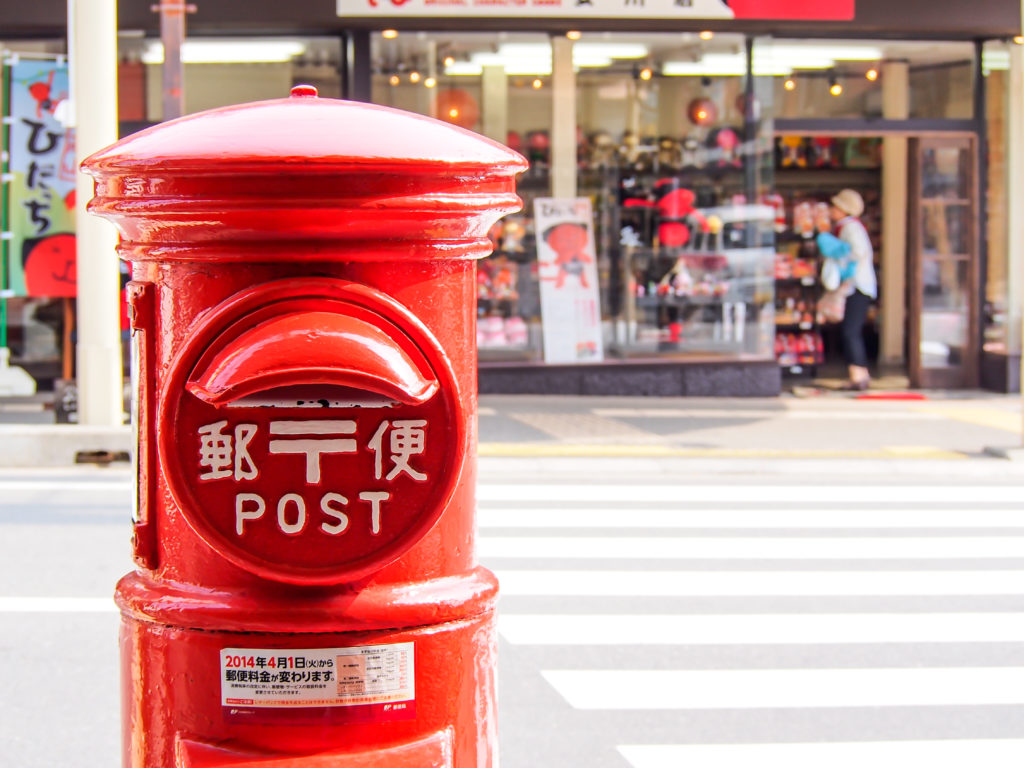A tight labor market and a booming e-commerce sector is putting pressure on last mile operators in Japan. Japan Post, Yamato and other carriers are undergoing change to cope with this pressure. Analysis from Ian Kerr (Postal Hub Podcast) and Marek Różycki (Last Mile Experts).
Japan’s delivery sector is caught in a bind. It’s suffering severe labor shortages while the number of parcel deliveries continues to rise thanks to e-commerce – 4.25 billion in FY 2017, up 5.8% from the previous year. Meanwhile the percentage of working-age people aged 15-64 fell 0.28% to 59.49% in 2018.
So how is the delivery sector responding? Let’s start with Japan Post.
Letters down, parcels up
Japan Post is facing a situation familiar to posts the world over. Letter volumes are falling, while e-commerce parcels are booming. In August it was announced that Saturday delivery for standard mail would cease due to a labor shortage and dwindling demand. Standard mail delivery requirements will also be relaxed.
While Saturday deliveries for letters could be terminated as early as next year, Saturday delivery for parcels is to remain, along with express and registered mail.
A government panel proposed an end to next-day delivery for standard mail, and that the standard delivery time limit of three days be extended to four days. The Japanese government holds a more than 50% stake in Japan Post Holdings.
Japan Post estimates the changes will lift its postal service profit by ¥62.5bn (US$578m) thanks to reduced labor costs.
Labor shortages
Japan Post isn’t alone in suffering labor shortages. National parcel carrier Yamato is also suffering capacity issues thanks to e-commerce growth and first-time delivery issues.
Home delivery still accounts for almost all online orders. Cultural norms have led to a situation where Japan Post, Yamato, Sagawa and other Japanese carriers will continue to attempt residential delivery until the consumer says otherwise. Market reports suggest that 15-20% of home deliveries fail first time. With more women and seniors working, and single-person households increasing, face-to-face deliveries to the home are proving more difficult.
Rakuten and One Delivery
Price rises have also been introduced as a means of dealing with the driver shortage. This has also opened the door for online retailer Rakuten to launch its One Delivery initiative.
Rakuten is Japan’s biggest e-commerce site. In reaction to continued capacity issues and increased delivery costs, it is taking a leaf out of Amazon’s book in launching One Delivery.
With One Delivery, Rakuten will manage merchant deliveries from end to end, working through both Rakuten’s own logistics network and external partners.
Merchants will be able to use Rakuten fulfillment centers and customers will be able to opt for faster deliveries. It also offers some interactive delivery management (IDM) features, such as checking delivery status and specifying the exact delivery time and method (such as pickup at a convenience store, delivery locker or residential delivery).
Rakuten is also collaborating with external partners to build a comprehensive logistics network.
Rakuten’s self-operated door-to-door delivery service, Rakuten Express, is also growing to cover all Japan’s major cities. Last year Rakuten launched ‘Oki-hai’ delivery, a variation on unattended home delivery, allowing customers to designate a location for couriers to drop off deliveries, for example ‘near the doorway’ or ‘near the gas meter’.
What about Amazon?
Amazon is active in Japan and is taking a different approach to the labor issues affecting the major carriers. Amazon’s Prime Now service in Japan increasingly depends on individual freelance drivers working via Amazon Flex.
Sagawa Express stopped delivering for Amazon in 2013 and, following price increases in 2017 and capacity issues, Yamato reduced its contract with Amazon and withdrew from delivering Prime Now purchases.
The labor shortage means Amazon Flex drivers approach delivery as a side job that they do in their spare time.
Amazon Japan has announced it will begin installing Amazon Locker pickup kiosks in Japanese retail outlets and train stations this year, starting with Tokyo. It is partnering with the FamilyMart convenience store chain, supermarket operator Fuji Citio and Odakyu Electric Railway.
Amazon Japan intends to expand the service to 500-1,000 locations nationwide over the next few years.
Parcel lockers
Packcity Japan is a joint venture (JV) formed in May 2016 between Yamato and Neopost Shipping, with Yamato owning 49%. The JV already has a network of around 5,000 locker installations, which are carrier agnostic.
Japan Post has set up a locker service called Hako Post. The service is carrier specific (Japan Post says it is considering opening up the network) and currently operates some 400 lockers in major cities. Earlier this year it was reported that Japan Post is considering joining the Packcity network.
In 2017 a government survey found that fewer than 1% of people had used parcel lockers for e-commerce deliveries.
PUDO points
While there are tens of thousands of PUDO points in Japan, particularly in the convenience store sector – Lawson, Family Mart, Circle K and 7/11 all have wide-scale tie-ups with the major carriers – the adoption of PUDOs in Japan still lags behind many other e-commerce markets. To date, PUDOs have been almost exclusively used for failed deliveries, rather than a customer delivery preference.
Rakuten is encouraging its shoppers to nominate Japan Post post offices or parcel lockers as their delivery preference. Japan Post has a network of about 20,000 post offices
Congestion
Traffic congestion is a problem in many markets, but in Tokyo local authorities are encouraging measures to reduce congestion in the lead-up to the 2020 Tokyo Olympic and Paralympic Games.
In an attempt to reduce parcel redeliveries, Yamato will promote its advance parcel delivery notification service, which allows customers to change the location for receiving parcels. It will also continue to grow its parcel locker network.
Drones
Rakuten is partnering with China’s JD.com on drone delivery, with the aim of accelerating the development and commercialization of Rakuten’s unmanned delivery solutions in Japan.
Drones were used to make deliveries from a convenience store to a recently de-quarantined area near the Fukushima nuclear disaster, where residents were returning to a town devoid of shops or services.
More recently Rakuten partnered with Bell Helicopter to jointly develop a drone capable of traveling at 160kph (100 mph) and carrying up to 32kg (70 lb). The drone itself is 2.7m (8.8ft) wide, 1.8m (5.9ft) tall and weighs about 160kg (350 lb).
But drones aren’t just in the air – ground-based delivery robots are also being developed. Rakuten will be using JD’s delivery robots, while other robots have been trialled at university campuses.
Delivery robots can’t be deployed on public roads for now, but the Japanese government plans to open up public roads for trials of unmanned delivery robots in the next six months or so.
Conclusion
Japan is a stark example of what happens in developed economies with an aging population and shrinking labor pool when there is an explosion in e-commerce parcel volumes.
The Japanese are right to explore IDM but will need to pair this with out-of-home delivery capability (offering higher first-time delivery success rate and greater operational efficiency with more parcels per stop) to manage growing volumes.
Bios

Ian Kerr is the founder and host of the Postal Hub Podcast, the weekly podcast for the postal and delivery sectors.

Marek Różycki is managing partner at Last Mile Experts, specializing in CEP and e-commerce last-mile advisory.


